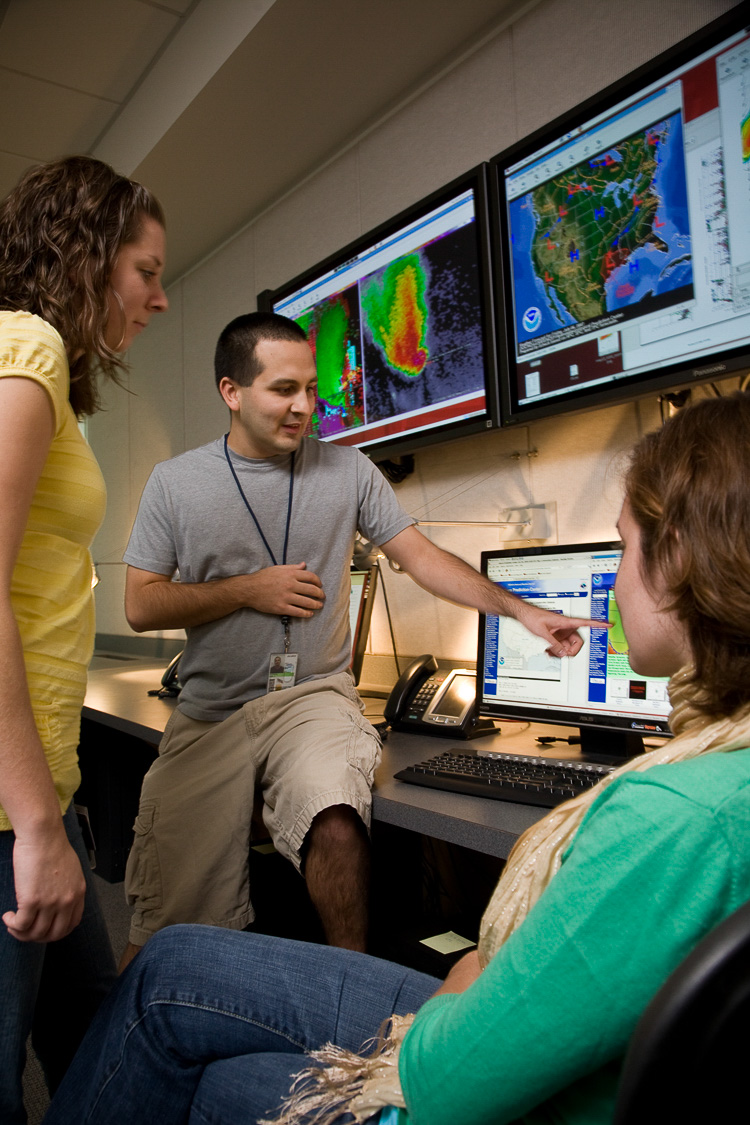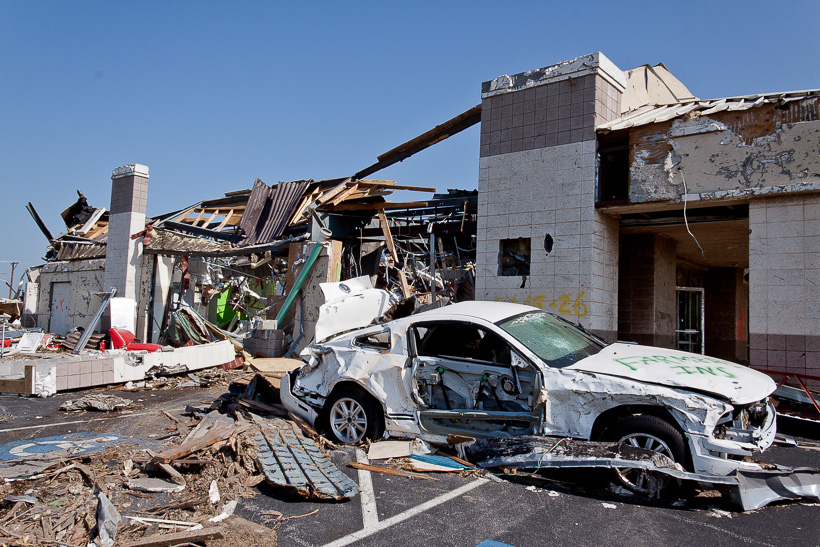About NSSL
2024 IN A FLASH! See the accomplishments NSSL made in 2024. Download the full 2024 accomplishments document (PDF)
The NOAA National Severe Storms Laboratory (NSSL) is a federal research laboratory under NOAA's Office of Oceanic and Atmospheric Research.
NSSL's research spans weather radar, tornadoes, flash floods, lightning, damaging winds, hail, and winter weather.
NSSL is located in the National Weather Center (NWC) in Norman, Oklahoma. The NWC houses a unique combination of University of Oklahoma, NOAA and state organizations that work together to improve understanding of weather.
NSSL has a strategic research partnership with CIWRO (formerly CIMMS), the University of Oklahoma's Cooperative Institute for Severe and High-Impact Weather Research and Operations, one of NOAA's joint institutes. CIWRO enables NSSL and university scientists to collaborate on research areas of mutual interest and facilitates the participation of students and visiting scientists.
What We Do

Severe weather warning decision support software is tested in the NSSL Development Lab
Mission: We are the world’s preeminent laboratory for observing, understanding, and modeling severe thunderstorms. We serve as a national resource for severe weather research and work collaboratively with the National Weather Service to ensure that their forecasters have the knowledge, capabilities, and technologies to remain world leaders in effectively communicating accurate, timely, and actionable forecasts and warnings of extreme weather to the public and commerce.
Radar research: NSSL is NOAA's primary radar laboratory and a world leader in ingenuity and creativity, pushing radar technology to the edge. From the original WSR-57 research project to Doppler radar, NEXRAD, and now dual-polarized and phased array radars, NSSL research has made radar one of the most valuable tools available to a forecaster.
Forecast research: NSSL researchers want to better understand when and where severe weather will occur, by studying thunderstorms through direct observation in the field or by making computer simulations. They apply this knowledge as they develop and enhance weather prediction models and techniques to support the NWS mission to provide weather and water forecasts for the U.S.
Warning research: NSSL researchers work to develop new weather and water related applications and water resource management tools help NWS forecasters produce more accurate and timely warnings of flood events.
Why We Do It
Severe weather has touched every state in the U.S. Hurricanes, tornadoes, blizzards, wild fires, floods and droughts are very real threats to our property and our lives.

FEMA
Damage from the 2011 Joplin, Missouri tornado
Why do we do what we do? Because:
- Weather is our passion.
- We know that changing demographics will place more people in the path of natural hazards.
- We have a responsibility to continue exploration and discovery in new areas to lay the foundation for services of the future.
- We have a responsibility to translate discoveries into tangible benefits that can impact society for generations to come.
- We have a responsibility to enable the nation and society to make informed decisions in the decades to come to prevent loss of human life.
We are grateful that our country values a strong research focus on hazardous weather forecasting to reduce human lives lost and minimize financial burdens.

